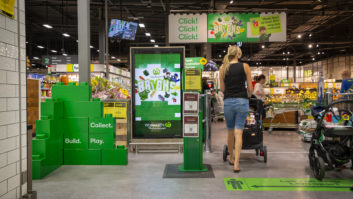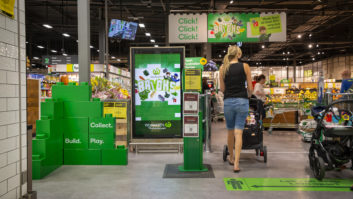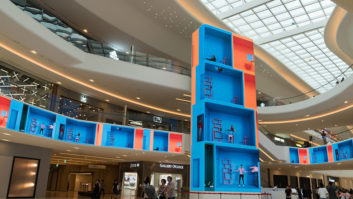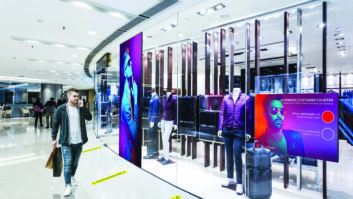 In the retail industry, the consumer experience is imperative. The pandemic-era, generational change, and e-commerce have shaped how we define consumer behaviour today. But how does this impact how retail digital signage is displayed?
In the retail industry, the consumer experience is imperative. The pandemic-era, generational change, and e-commerce have shaped how we define consumer behaviour today. But how does this impact how retail digital signage is displayed?
In Q1 of 2022, we ran a survey in the US to evaluate the impact of digital signage in the retail industry. Specifically, we wanted to better understand how much digital signage increases sales and if retailers can measure the impact of their digital displays. More broadly, we discovered insights into the effects of specific types of content displayed on digital screens and digital signage locations.
Our research found a strong correlation between using digital signage for in-store navigation or wayfinding and increased sales. 82% of retailers picked 7 or higher, on a scale of 1-10 when asked how using signage affected sales.
Significantly, alluding to the type of information customers value in a modern retail environment and how this affects their shopping behaviour, 88% of retailers we surveyed who use digital signage for displaying public health notices or emergency alerts say they can measure the impact digital signage has had on their business.
Ecommerce is thriving, more shoppers are using their phones in-store, and social media is influencing purchase decisions and brand perception more than ever. So, how does this affect digital signage?
Highlighting the current power of digital displays, 90% of retailers we surveyed think digital signage makes brands and merchandise more recognisable. In particular, most respondents strongly agreed (43%) or agreed (47%) that digital signage positively impacts brand awareness.
Connecting the online space with the in-store experience is a continuing trend that digital signage can support. For example, 29% of respondents who took our survey stated that they initially implemented digital signage to support interactivity within their stores through customers’ mobile devices. Meanwhile, others indicated they used digital signage to repurpose social media content, or add colours or icons to QR codes that take customers to clickable links.
ENCOURAGING RESULTS
Aside from high-traffic areas in-store, we found encouraging results through our survey concerning digital signage displayed in windows. Notably, there was a strong connection between using digital signage in street-facing windows and increasing in-store traffic – 75% of retailers picked 7 or higher, on a scale of 1-10, when asked if using digital signage for street-facing signage ncreased in-store traffic.
Many retailers clarified how their retail business had benefited from DS. Responses varied from ‘having more customers online and in-store’ and ‘more website traffic’ to ‘taking our company to the next level with digital literacy.’ Importantly, one business owner concluded that ‘digital signage created more avenues for the customer experience.’ My take? Retail digital signage that delivers an omnichannel experience will be key to customer engagement in 2022.






